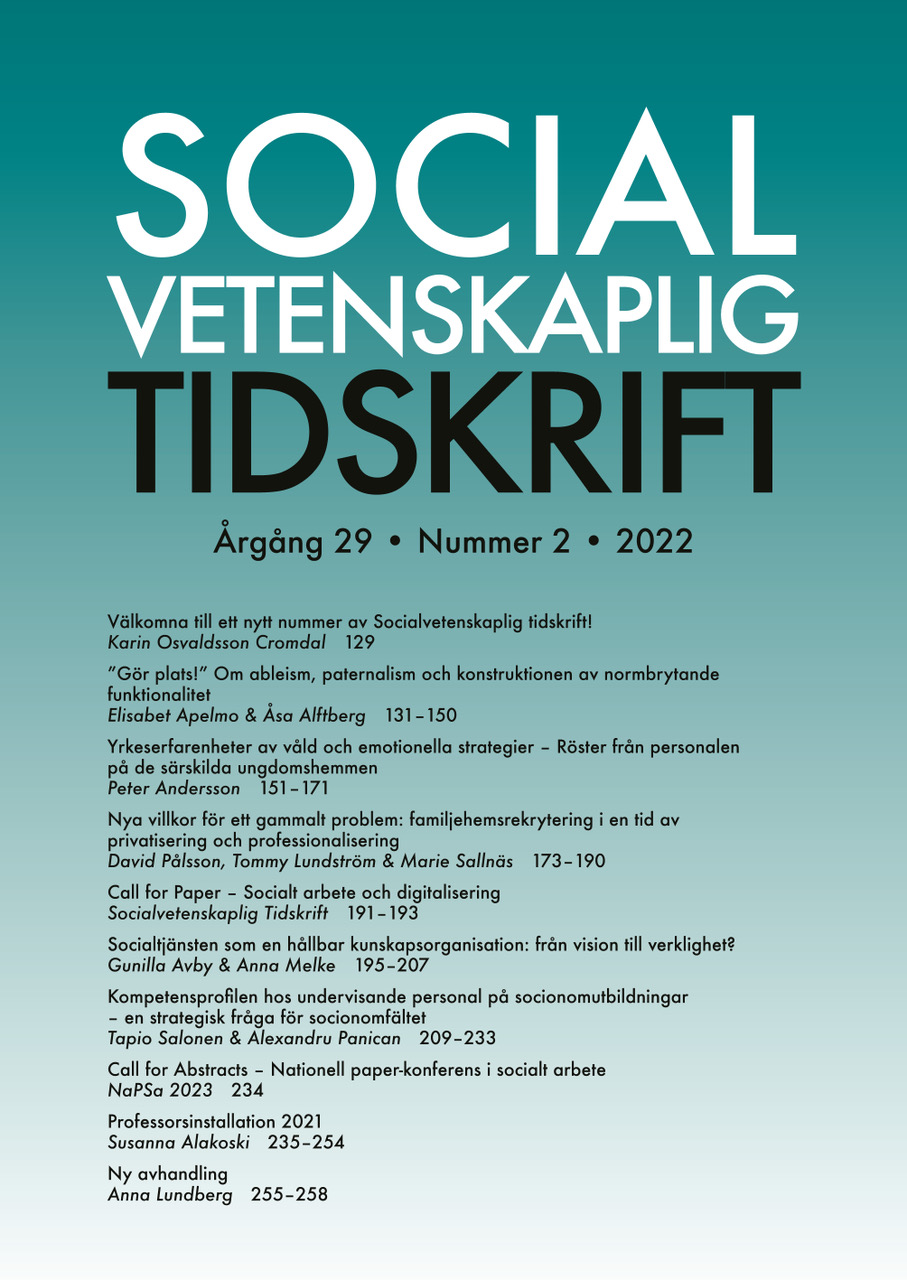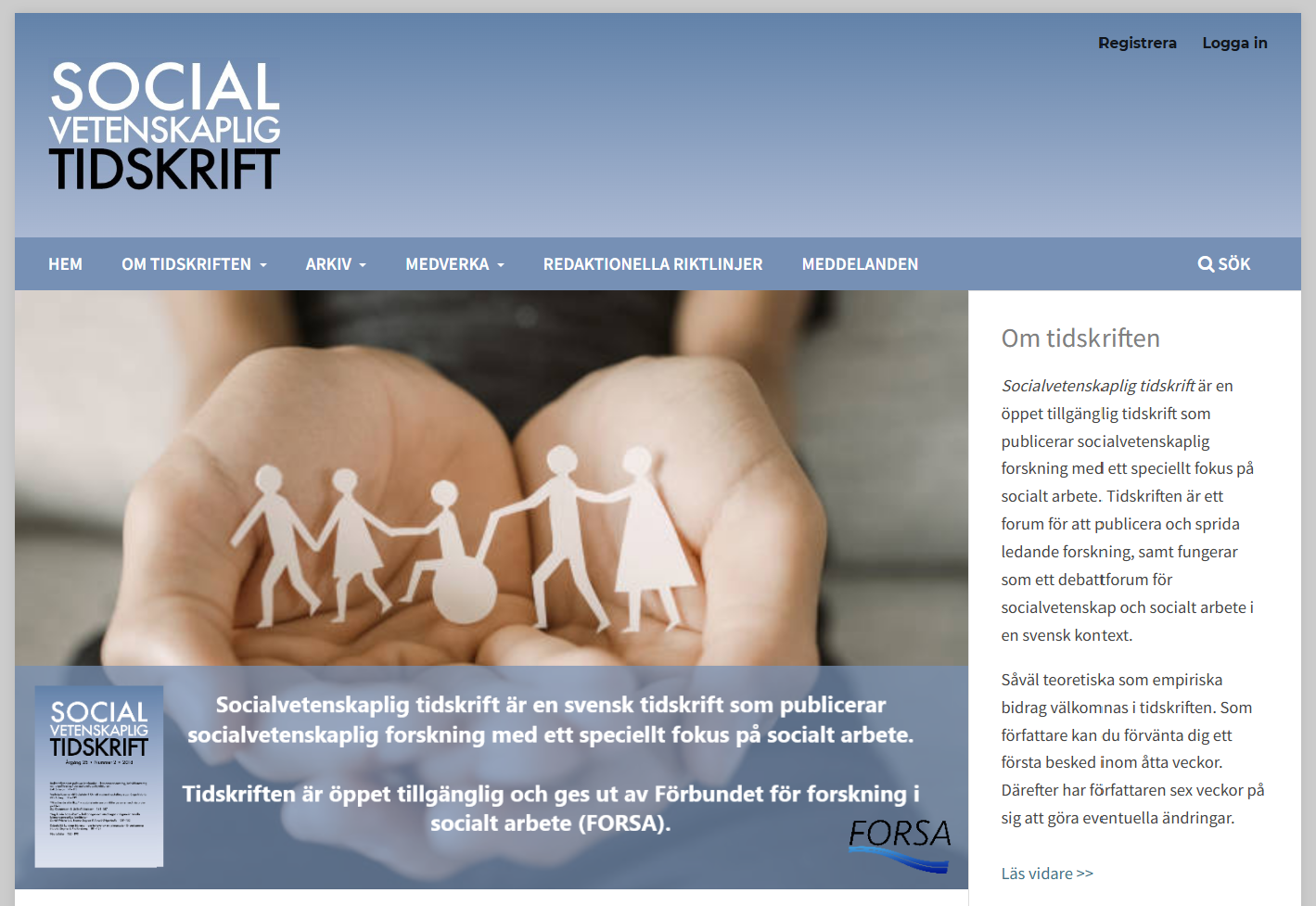”Gör plats!”
Om ableism, paternalism och konstruktionen av normbrytande funktionalitet
DOI:
https://doi.org/10.3384/SVT.2022.29.2.4609Abstract
”Make room!” Concerning ableism, paternalism and the construction of dis/ability
Within the social work profession, social vulnerability and social justice are central concerns. However, professional emphasis is on economic and social conditions and less on dis/ability, despite the fact that dis/ability is important, not only for services aimed specifically at people with dis/abilities, but the entire profession of social work is linked to dis/ability in various ways. The purpose of the article is to contribute to a deepened understanding of vulnerability in general and, in particular, the vulnerability of people with dis/abilities. An advertisement from the Swedish Public Employment Service’s campaign “Make room!” forms a point of departure for a theoretical discussion of how dis/ability is constructed.
The article demonstrates how the advertisement is based on paternalistic and ableistic ways of thinking that connect dis/ability, gender, and race/ethnicity. Able-bodied perfection is regarded as desirable, while the deviant body is linked to deficiency and suffering. The article also deals with the critical discussion that followed the advertisement, which eventually led to the Swedish Public Employment Service withdrawing it.
Finally, we argue in favour of a cripistemological perspective in social work. This means taking previously marginalized knowledge as a starting point and reformulate traditional perspectives. It also means seeking cross-border cooperation between social work and the disability rights movement as well as other social movements. Thus, the lived experience of vulnerability that can result from impairment and its effects, as well as the political vulnerability that arises due to lack of resources, are made visible, without vulnerability being interpreted from paternalistic and ableistic perspectives. Moreover, ideas of the normal body and the normal way of thinking and feeling can be
Downloads
Publicerad
Referera så här
Nummer
Sektion
Licens
Copyright (c) 2023 Elisabet Apelmo, Åsa Alftberg

Det här verket är licensierat under en Creative Commons Erkännande 4.0 Internationell-licens.
Allt material i Socialvetenskaplig tidskrift publiceras sedan 2022 (Vol 28 Nr 2) med omedelbar öppen tillgång (open access), under Creative Commons-licensen CC BY 4.0. Upphovsrätten till innehållet tillhör respektive författare.
Allt innehåll i tidskriften är fritt tillgängligt utan kostnad och får fritt läsas, laddas ned, kopieras, delas, skrivas ut och länkas. När innehållet används måste författare, källa och licens anges. Författaren kan fritt göra sin publicerade text tillgänglig på institutionella och internetbaserade arkiv, exempelvis sitt lärosätes digitala arkiv eller andra tjänster för detta.
Inga publiceringsavgifter tas ut vid publicering i Socialvetenskaplig tidskrift.


